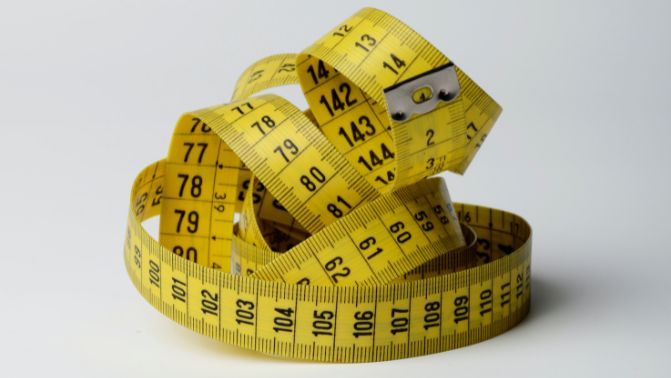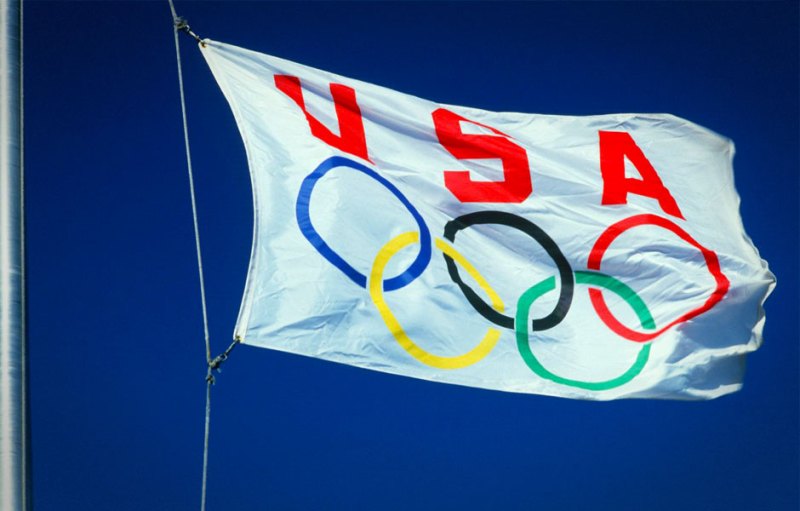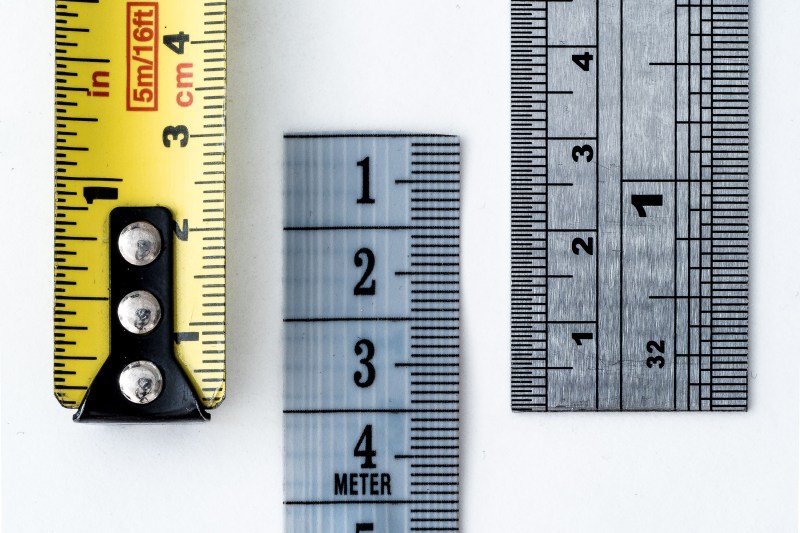If you’ve ever had to look up “how many ounces in a pound,” “how big is a pint of beer,” or “how many inches is 5.5 feet,” you’re not alone — well, at least in the U.S. The U.S. is one of the only countries that still uses the annoyingly complicated measurement system known as the imperial system. Most other countries don’t know the struggles of trying to convert measurements without a calculator, as most regions use the metric system.
This metric system vs. imperial system chart posted on Reddit perfectly encapsulates why the metric system is so much better. But first, let’s take a look at the basics of the metric and imperial systems and how they differ.

The metric system vs. the imperial system
The metric system, also known as the Système International (SI) and the International System of Units, is the most common measurement system worldwide. It’s a base-10 system that uses the meter as a unit of length, the kilogram as a unit of mass, and the second as a unit of time. The meter was created using the Earth’s circumference. Almost every country in the world uses the metric system for measurement.
The imperial system, also known as the customary system of measurement, was originally used in the U.K. and other Commonwealth countries. The units of measurement include the inch and mile for length and the pound for weight. The U.S. Customary System (USCS) was based on the British Imperial System, which was created to unite the country and remained in use until 1965. Many use the term imperial system (IS) to describe the U.S. and British systems. Today, only three countries still use the imperial system: Liberia, Myanmar, and the U.S.

This chart shared on the r/selfreliance by Redditor LIS1050010 perfectly shows the differences between the two systems. With just a glance, it’s clear how simple the metric system is — and how needlessly complicated the imperial system is. The primary difference between the two is the type of units used and how those units are converted.
With the metric system, it’s quick and easy to convert one unit to another by multiplying or dividing by powers of 10. Here’s how it works — 10 millimeters is 1 centimeter and 10 centimeters equals 1 decimeter. In contrast, there isn’t a straightforward way to convert imperial units — 12 inches equals 1 foot and 3 feet equals 1 yard. You must either memorize the conversion rates or use an online conversation calculator to quickly convert imperial units.

Which one is better?
Just looking at the facts, it’s easy for someone to argue that the metric system is vastly superior to the imperial system. Nearly every country uses it. This almost universal standard allows you to understand measurements — and be understood — no matter where you are. Additionally, the metric system is used almost universally around the world, so measurements (especially speed limits) are simple to understand no matter where you are.
The metric system is also easier to use because of the logical way the measurement units relate to one another. But despite its obvious advantages, it’s unlikely that Americans will make the switch anytime soon.

Why doesn’t the U.S. use the metric system?
Way back when the U.S. Customary System was created, the metric system wasn’t as prevalent as it is now. Every industry and government agency in the country was set up around this measurement system. Switching measurement systems now would be a time-consuming and costly process for businesses and the country’s infrastructure. In fact, switching the whole country to the metric system could take decades. That said, the metric system is widely taught in U.S. schools along with the imperial system. Many measurement tools also include both types of units, and packaging for commercial products is required to show net quantities in both measurements.
In looking at this simple conversion chart, it’s easy to see how much the metric system is easier to understand. Converting units is simple and the widespread system makes it simple to understand measurements everywhere. But even though it’s the superior system, it’s unlikely the U.S. will ever adopt it due to the cost and time required to convert. It looks like we Americans are stuck with our calculators and Google searches for the time being.

The Brits do their own thing
So, earlier on we said only three countries still use the imperial system, Liberia, Myanmar, and the U.S. Well, that’s true to a point, you just have to ignore the U.K. because in the U.K., they actually still use both systems, the metric system for most everything, but the imperial system for two very important things (and we’re willing to bet you already know one of them).
First, let’s get to the one you may not know. While most of Europe posts road distances in kilometers, the Brits still use miles to measure distances, especially on roadways, with signs in the U.K. showing the distances in miles as well as speed limits. There’s no real official reason as to why this is still the case, perhaps the Brits just really want to make things confusing for tourists from the rest of Europe by making them drive on the other side of the road and changing all the distances.
The other place where imperial units are still very much in use in the U.K. (and Ireland) is in, you guessed it, the pub. Even after the country went metric, the government wasn’t foolish enough to mess around with the classic pint. Throughout the U.K. beer is still served in pints or half pints, and it’s a big deal. All pubs use glasses that are specially marked to show it is a pint. Because it’s never good to cheat someone out of a full pint of beer, even if it is served warm (seriously, what is the matter with the Brits?).




